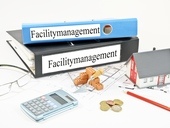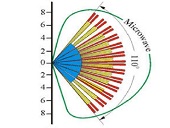Facility management market became more stable over last 20 years where is visible clear difference between companies providing one to two services and companies providing in house management and provide complex FM services. Real FM companies are equipped with own CAFM system or uses certain SW applications for specific FM services. Each big FM service provider can't be without CAFM system. Not only company requires key information but also addresses SW support requirements their clients have.
Archiv článků od 9.12.2013 do 7.4.2014
BIM (Building Information Model) as a process is known from the seventies, but with increasing pressure from investors to reduce construction costs we can assume its massive use. On large construction sites, it could not be managed without it in the future. Technological advances in the field of technical coordination and simulation provides a new method in construction (BIM). These methodologies allow us to implement a risk assessment has been preparing itself to building.
The first part of the series focused on explosion protection, describes the measures of primary explosion protection which means preventing of explosive atmosphere occurance. This kind of protection includes preventing the formation of explosive atmosphere by exclusion of flammable substance or oxidising medium. The article further describes the options of inerting technology with an explosive atmosphere and other possible measures.
While we use computer programs we naturaly talk about Data and Information. What the word Data actually means? What the word Information actually means? What sense do those have in facility management? Answers to these questions can be found in an article about Data and Information in facility management.
This Article focuses on the significant changes to the Land Register introduced by the New Civil Code and an act no. 256/2013 Coll. The most important change is the strict application of the principle of material publicity – in contrast to the previous legislative regulation the record in the Register is always the decisive factor for determining the existing rights. The recording of real rights proceedings improves the protection of real estate owners from fraud by mandatory informing them about the proposed changes. The real right will not be recorded until 20 days after informing the owner.
The priority principle is strengthened by marking not only days but also hours and minutes of submitting the proposal of real rights record. An existing real right which was not a subject of mandatory record before has to be recorded by January 1, 2018. Neglecting this duty might result in losing the right in favor of an incompatible right recorded later.
The real rights are now recorded uniformly regardless if they originate through a contract, court decision, auction etc. Rights such as lease can also newly be recorded in the Register. The changes also reflect the newly introduced principle in the Civil Code making the ownership of the buildings inseparable from the ownership of the land beneath. This principle does not extend to the buildings and land which had different owners before January 1, 2014, temporary buildings and the buildings built entitled from the right to build.
Previous article presented findings from marketing research. This article is focused on introduction of pilot model of Facility Management audit. Article includes outputs, which will be used in desertation thesis “Facility Management Audit” and describes complex audit of facility management (FMA). Goal of FMA is to strengthen confidence of users of FM in functioning of FM. FMA itself is based on audited processes included in the process map of the client. Audit is performed according to three criteria: finance, risk and quality. Methodology of FMA is based on adjusted ISA standards.
New Civil Code enacts special type of solidary obligation to remedy the defects of building constructed under contract for works. All subcontractors (suppliers) of constructor, investor`s technical supervisors or construction project designer are solidary responsible together with the constructor in case the defect can be attributed to the performance they provided. However, these parties need not to be the parties to the contract for works itself (and usually are not) as their obligation arises by law.
The remedies that the investor can claim on these co-debtors, however, are limited to right to demand the repair of the defect. Investor may demand remedy on any of the co-debtors and all the co-debtors are obliged to perform the remedy in full.
The investor has to give notice to the debtor within a reasonable time. The notice can be sent to any of the co-debtors but we advise all investors to give notice always to the constructor first or together with the other co-debtors.
The aim of the first part of the standard is to define a common language for facility management, as well as clarifying the main and support activities of the organization. In order to establish a common language of the terms and definitions are standard aims to define the basic functions of the facility management and the definition of relevant terms that are needed to understand the context of the standard.
The New Civil Code (“NCC”) brings about a comprehensive enactment of culpa in contrahendo – “fault in conclusion of a contract”. This legal institution has so far completely absented from the Civil Code and only the court practice would offer some hint as to its applicability. NCC newly emphasises the principle of honest legal affair based on the good faith of the acting party. In specific provisions, NCC explicitly prohibits a party from negotiating a contract while lacking the will to conclude it as well as from abolishing negotiations in an advanced stage without a legitimate reason to do so. Further, contract parties have a mutual information duty regarding any factual or legal circumstances which may the other party deem relevant. If such information is privileged, though, the party which recieved it is bound not to misuse it or disclose it without proper legal grounds. Any act by a contracting party lacking to meet the aforesaid criteria establishes liability to pay damages.
Asbestos is often mentioned in connection with the construction industry, especially with the school buildings. Wrong way of asbestos removal meant a multimillion cost of cleaning the property. Unfortunately, these cases do not cause a change in legislation that would regulate working with asbestos.
Article includes outputs, which will be part of authors dissertation thesis “Model of Facility Management Audit” and examines existence of complex Facility Management Audit (hereafter FMA). Literature review of Czech and international literature was performed without finding any evidence. Due to lack of information marketing research was performed. From total 38 respondents 77 % respondents were from Czech Republic or Slovakia and 23 % were international. Respondents answered to two questions: Did you met with complex FM audit? and Do you consider complex FM audit useful?
The article discusses about the problem many facility managers deal with, the change of lightning in particular area by application of combination of modern technologies. The change of lightning was realized in high-rise building of University of Pardubice. The article describes project stages, their evaluation, from initial until the final, which closes the project by changing the lightning in the whole building in the year 2014. The solution is evaluated from the economic aspect, moreover the article also depicts the way how it was achieved - the way satisfying both employees and the management of the University.
The paper deals with the FM market situation in the Czech Republic. Focus on current external market size, potential external market size, market restriction from client and provider view and other financial and nonfinancial indicators. Define the method of data collection, market sizing, sectors selection and service selection which are include into FM scope. Paper brings the overview about FM development from 2009 to 2012 in the Czech Republic based on the collected date. Overview covers also future trends and risks from client and providers view.
The article describes the characteristics of claims for defects from contract for work according to the new Civil Code. The new Civil Code unifies the provisions on contract for work currently contained in both Civil and Commercial Code. The article describes the defects founding the liability of a contractor, reporting the defects and warranty, the rights resulting from the defects and the specifics of claims for defects when the subject of a contract is a building.
It is important for the work to be clearly specified in the contract. Differences from the contract are considered defects. It is vital to inspect the work after the handover for any differences from the contract. The ordering party has to report the defects to the contractor without undue delay. The statute of limitations for claiming the rights from defects is 2 years. The rights resulting from sales contract defects apply analogously to the contract for work. In case of substantial breach of contract the ordering party can ask for the delivery of a new work, repairs or resolution of a contract. Unsubstantial breach of contract allows for repairs or discount.
The last part of the article concerns specifics of claims for defects when the subject of a contract is a building. The ordering party cannot refuse to accept the building for minor defects. The statute of limitations for reporting hidden defects is 5 years in case of a building. The responsibility for defects in shared between the contractor, the maker of the documentation and the construction supervisor.
Facility management is understood differently In the European Union. The main reasons for the need of standardization in this field of services are different objectives of facility management in the European Union countries, different levels of application and different national cultures, markets and languages. The unified European standard Facility management should help small or larger firms which offer services in this area together, share experiences and traded in international level. Creation of a European standard will be removed barriers to market at the facility management for companies providing facility management services, as well for their customers.
This article describes a photovoltaic generator used for water heating and compares it with the well known solar thermal system. Photovoltaic modules can be connected to the load both directly or via a regulator that tracks the maximal power point of the modules. Measurements and simulations in meteorological conditions of Czech Republic were done to set the energy loss for a system without the regulator. It was found that without the regulator the system can deliver maximally 77 % of energy. To achieve high efficiency of the system, maximal power point tracking has to be used.
The article deals with a new product in the Czech market that is quickly getting to awareness of potential clients and gaining a significant place in the local real-estate market. Until recently, the inspection of immovable properties was an unknown concept. Nevertheless, in recent two years such assistance service is being more and more popular. Pertinent specialised inspection companies assist the real property buyer in eliminating potential risks that are related to selection and purchase of a given building. A competent certified inspector checks up to about 200 items of the building and compiles an expert report to help the client to correctly decide whether he should buy the given building or not. The inspector will acquaint the client with a real purchase price, precisely describe all the defects and how to correct them, and finally, he will hand over to the client a complete budget to cover the cost of necessary repairs.
In 2013 the inspection of real properties comes to one of the fastest growing segments of Czech economy. The people intending to buy any real property are more cautious and, now at the time of an economic uncertainty, they begin using the above relatively new assistance service in a large extent.
zpět na aktuální články



















